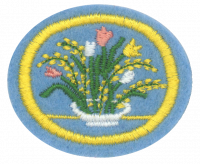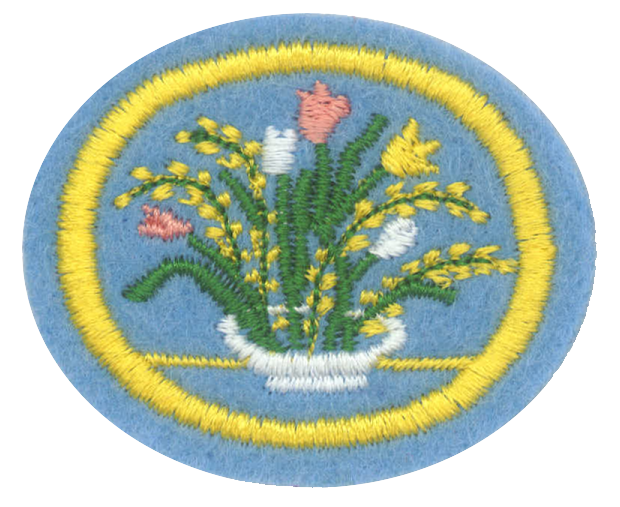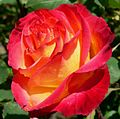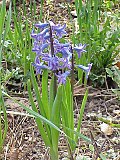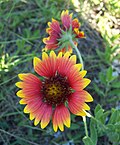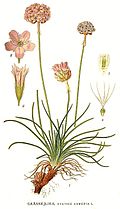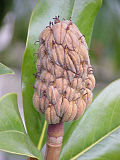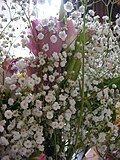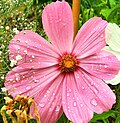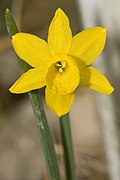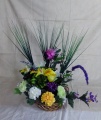Especialidades JA/Ornamentación floral/Respuestas
Nivel de destreza
2
Año
1938
Version
03.12.2025
Autoridad de aprobación
Asociación General
1
!style bgcolor='#ffb0b0' width='50%'|Perennials !style bgcolor='#b0b0ff' width='50%'|Annuals |- |style bgcolor='#ffc0c0'|
- Rose
- Tulip
- Rhododendron
- Hyacinth
- Gaillardia Blanket Flower
- Statice
- Yarrow
- Magnolia
- Baby's Breath
|style bgcolor='#c0c0ff'|
- Lotus
- Aster
- Cosmos
- Sunflower
- Daffodil
- Carnation
- Marigold
- Salvia
- Morning Glory
|}
Annuals are those flowers that complete their lifecycle in just one growing season. In other words, you plant a seed (or a seedling plant), it grows foliage, then flowers, seeds and then the plant dies, all in the same year. Annual flowers tend to bloom from spring until autumn frost. Although they must be replanted each year, annuals are hard to beat in terms of showy, season-long color.
Perennials are those flowers that grow for three or more years. Although most perennials tend to have a relatively short season of bloom, combining several species in your planting can yield season-long color. &
Perennials
2
3
4
5
6
- Containers
- Some flowers are considered to be more suited to more ornate containers, and some to simple. For instance, if you were doing an arrangement with uses, use Glass or ceramic containers. For wildflowers such as daisies, use wicker or plastic. Use bowls or short baskets for short flowers. Use baskets for silk flowers or flowers like daisies. Use tall vases for tall flowers.
The size and shape of the container and arrangement also depends on it's intended use.
- Small arrangements like the Mound can be used on end tables or as accent pieces.
- Triangular arrangements are often used as altar centerpieces or as focal pieces along walls to add visual interest to the blank space.
- Asymmetrical arrangements work best in shallow containers and are often used as focal points in entryways, on mantels, and on the end of buffet tables.
- The Crescent is similar to the Asymmetrical arrangement. Low, oblong or oval containers are often used, and it is placed in similar locations to the Asymmetrical arrangements.
- The Hogarth Curve is an attention-grabber. it is often displayed prominently in tall vase or as a door or wall piece.
- Room furnishings
- Use large arrangements for table center pieces. Use small arrangements for side or end tables. Flower colors should contrast with the wall colors.
7
- Use dark flowers in front of light backgrounds.
- Use light flowers in front of dark backgrounds.
- Use large flowers as the center focus flowers in an arrangement.
- Use small flowers as filler flowers in an arrangement near the vase's edges. Use open flowers as the center focus flowers in an arrangement.
- Use partly open flowers as filler flowers in an arrangement near the vase's edges.
- Also, use large flowers to construct the primary angles and focal points.
8
8a
8b
8c
Large arrangements in vases or baskets, intended for display in public areas such as an office or a church foyer or sanctuary.
9
Wildflowers that can be used include wild rose, daisy, blanket flowers, sunflowers and wild sweet peas. Use wildflowers whose sizes and colors complement each other.
Additional Information
The following information was not included in the honor requirements, but it should be.
Tools for use with live flowers
- Sharp pruners or a sharp knife.
- Five gallon bucket with water in it.
- Preservative (an easy one is 1 part sugar/3 parts water).
- Floral foam - can be soaked in water to help the flowers keep longer in an arrangement that will not take water. It is also a sturdy base with which to help position the flowers for an arrangement.
Tools for use with silk flowers
- Pliers
- Wire cutters
- Floral tape
- Floral wire
- Floral foam (dry) - It is a sturdy base with which to help position the flowers for an arrangement.
